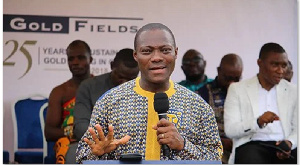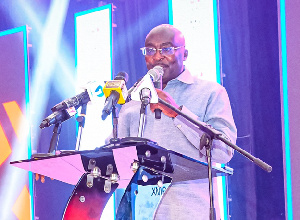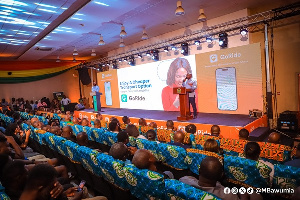Business News of Monday, 3 May 2021
Source: miningweekly.com
Gold Fields' plans bolstered by positive gold market
Dual-listed major Gold Fields’ subsidiary Gold Fields Ghana (GFG) is always seeking opportunities to expand its portfolio within the West Africa region, explains Gold Fields Executive Vice President and West Africa Head.
“Gold has performed very well on the global market since 2020. Further, while mildly fluctuating, the current gold price of about US$1,700/oz is viable, provided operating costs are managed well.”
Baku notes that GFG began a reinvestment project at the Damang mine in 2017, investing roughly US$1.4-billion in capital and operational expenditure over an eight-year period. The project, which is progressing ahead of schedule and beyond the production plan, reported positive cash flow in 2019.
“It is important to note that the reinvestment project started after the approval of the development agreement with the Ghanaian government. With only an estimated mining reserve of 1.7-million ounces of gold in 2016, the decision to reinvest in Damang was a strategic one.”
Baku notes that, in 2019, GFG also started a new Damang drilling programme.
The broader exploration programme has the potential to extend Damang’s life-of-mine (LoM) by a further four years, with the current estimated reserves expected to be depleted by 2025.
Meanwhile, the Tarkwa mine’s aggressive exploration agenda aims to identify new resources and upgrade existing ones. In 2019, Tarkwa added 1.2-million ounces to the mine’s resource portfolio – with an additional 200 000 oz in 2020 post-depletion – enabling the mine to extend its LoM by another 15 years.
The Asanko Gold Mine, a joint venture (JV) operation with Galiano Gold, is also focusing on exploration across its tenement package. In 2020, a budget of $10-million was allocated to exploration, half of which was funded by GFG.
Baku says that GFG’s strategic intent is to produce one-million ounces of gold a year in the region.
“Another strategic objective is to reduce all-in costs to below $1,000/oz to remain profitable and sustain operations even if the gold price declines to those levels,” comments Baku.
According to the 2020 financial results, GFG’s regional all-in costs increased by 2% to $1,060/oz from $1,039/oz in 2019. “We are aware that we have set an ambitious objective and we will continue to work hard to achieve it.”
Cost Reduction Strategies
The primary challenges affecting the performance and viability of GFG’s operations are deeper pits, declining grades, longer haulage distances, high waste strip ratios and high operating costs.
“Tarkwa and Damang are mature open-pit mines. As we mine deeper, we mine more waste and increase haulage distances, which drives up costs.”
GFG is mitigating these challenges through the adoption of technology to boost production efficiency, improve safety and promote growth.
“For instance, to optimise our operational efficiency, we are piloting autonomous drilling at Tarkwa and have installed a high-precision GPS hole navigation system on drill rigs at Damang. We have also started implementing a Cleaner Safer Vehicle initiative, converting diesel engines to run on liquefied natural gas.”
Gold Fields has also installed collision avoidance and fatigue management systems on haul trucks to prevent fatalities, serious injuries and equipment damage.
Addressing ASM
Baku notes that illegal and artisanal and small-scale mining (ASM) are more prevalent in the West African region.
He explains that GFG manages these activities through an ASM strategy, which includes patrolling active mining areas, consulting with affected stakeholders, negotiating evictions and, as necessary, prosecution of offenders by law enforcement agencies.
GFG recently revised its ASM strategy to include a more proactive engagement with community stakeholder groups and support the creation of non-mining jobs.
2021 Outlook
“We have set realistic production and cost targets for the year. We are optimistic that our mines, as well as the Asanko JV, will not experience any material interruptions, based on our experience in 2020.
Overall the outlook for 2021 is positive, if the gold price trades close to the $1,600/oz range,” Baku concludes.











